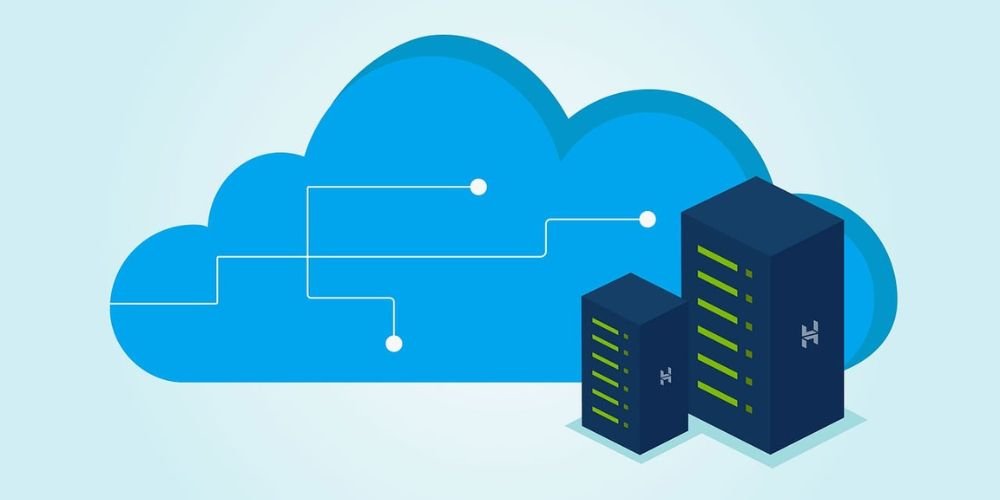on-premise vs cloud vs hybrid? Which is more safer data storage

Have you ever get confused about data storage. Data storage can indeed be a complex topic, and choosing the right option—cloud, on-premises, or hybrid—can be challenging. The selection of data storage solution is influenced by various factors including cost, data security, compliance, etc. Among all factors safety is indeed one of the most important factors in data storage.
What if you buy most expensive on-premise data center but if it is not safe then it will worth nothing. However, after reading this article you will able to choose best option for yourself. Starting from the pros and cons so that you can have an idea of each solution.
On-Premise
As the name suggests, on-premises data storage is the practice of maintaining data on local servers and devices that are physically located within your business or office. This setup is recommended by individuals who want complete control over data.

On-premises data storage is preferred by many sensitive enterprises because to its better oversight, security, and compliance capabilities.
What are best things of On-Permise storage
Security: On-premise allows full control over data security. IT team is given direct oversight of security protocols, similarly, sensitive data is stored in-house.
Customizability: It allows customization of stored data for performance requirements and compliance standards.
Reduced Latency: Locally stored data reduces latency while accessing or transferring data for a faster experience. This benefits such applications that need high-speed processing.
Legacy systems: Many organizations integrate legacy systems with on-premise storage. This integration is costly for other solutions such as cloud. Hence, it is more practical.
Independent from Internet: To access data, organizations do not need to connect internet which is beneficial for unreliable connectivity areas. Even in internet outages you can access your data.
Do you know a survey performed by Citrix of UK-based IT leaders they questioned 350 IT leaders in the United States who are using cloud based storage. Research showed over 29% of IT leaders found that moving projects from on-premises to the cloud was more expensive than expected.
What are some negative points of On-Permise storage
Costs: For data storage, the setup requires a huge investment in hardware and software such as servers and network equipment. Small businesses may face issue.
Maintenance: The on-premise system requires ongoing maintenance, upgrades, and updates that demand a dedicated staff.
Limited accessibility: It is accessible within organizations’ local network which can limit remote work activities.
Backup complexity: Recovery comes with complexity and cost. Organizations should ensure offsite backups.
Security issues: As the on-premise solutions give the complete data control to organizations, so they are responsible for protecting it against physical thefts and cyber attacks. Some organizations lack the resources to maintain such protocols.
On-Premise data storage is safe as compared to cloud
If it is well managed and organized On-premise data storage is a lot safer than cloud storage. There are variety of reasons for that.
Here are some few reasons we think:
After analyzing the key factors, we can conclude that on-premises storage can be much safer than cloud storage due to the enhanced control and customization it offers. However, maintaining high safety standards requires additional costs. Without any kind of backup, physical storage alone does not guarantee safety.
Cloud
Cloud storage is a service model in which data is stored on remote storage devices and accessed via the internet, offered by any cloud service provider. It allows you to access data from anywhere and at any time. The most prominent characteristics are high storage capacity and low costs.

Cloud storage can have its server location anywhere in the world and this is the basic difference in between On-premise and cloud setup where you are totally dependent on cloud service providers. Any network issue in the cloud service provider make your data temporarily inaccessible.
But there are some amazing benefits of cloud storage you cannot ignore.
What are best things of CLOUD storage
Scalability: You can scale up or down your storage capacity which is useful for businesses with data storage fluctuations. They do need not to invest in new hardware for extra storage.
Cost: It only costs the storage space. Additionally, maintenance costs are minimized.
Accessibility: Having a proper internet connection, you can access data from anywhere. This feature makes remote work and collaboration easy, increasing productivity.
Backup: The perks of Cloud storage are automated backup services and easily recoverable data in case of loss.
Security: The cloud offers encryption and multifactor authentication to protect against unauthorized access.
Maintenance: The providers handle updates, general maintenance, and security patches, keeping the infrastructure up-to-date without putting in effort.
What are some negative points of CLOUD storage
Dependence on Internet: Internet is necessary for data access. Slow or unreliable networks can cause challenges in data access or transfer.
Costs: Initially, the storage is cost-effective but unexpected fees for additional services or more storage can be accumulated.
Privacy concerns: Data centers have their law and regulations depending on which country they are located in. The third party can relinquish how your data is managed.
Limited customization: The Cloud often has standardized solutions, which can lead to limited customization options. Hence, data transfer can be complex.
Legal challenges: In legal disputes, managing and retrieving data in Loud is more challenging than the data stored On-Premise.
What about cloud storage safety
We cannot just simply say that cloud storage is not secure if it meets international safety standards then you can choose some well-renowned cloud storage. It has its own safety benefits.
Here are some few reasons we think:
Both cloud and on-premises storage have the potential to be secure, but each comes with its own set of advantages and challenges.
Hybrid
Hybrid storage combines both on-premises and cloud storage solutions, allowing organizations to leverage the benefits of both environments. This gives you a larger playground for your data and provides you a better control. You can duplicate your sensitive data by replicating data across on-premises and cloud environments, enhancing disaster recovery capabilities.

But the choice is yours if you want hybrid storage just for backup ( incase one goes down ) or you want to share your expenses. In both cases hybrid storage can be effective.
What are best things of Hybrid storage
Flexibility: It allows one to choose from the On-Premise environment and Cloud platform. Less sensitive data can be kept on the Cloud band critical data on On-Premise for security reasons.
Improved security: Data is segmented between both solutions, reducing exposure to potential security risks. Hence, organizations can better manage collaboration with industry-specific regulations.
Cost Efficiency: Hybrid employs optimized resource use. You can enjoy on-premise investments, with Cloud’s payment method.
Data recovery: Hybrid Cloud ensures a quick recovery of data enabling it to be backed on Cloud and on-premise.
Moreover, to prevent downtime, Cloud components provide continuity of operation.
Improved performance: Applications can be processed locally, and less sensitive tasks can be loaded on Cloud to reduce latency. Performance is improved as the tasks are divided between both solutions depending on the demands.
What are some negative points of Hybrid storage
Management Complexity: It requires specialized skills to ensure the smooth operation of both platforms. Managing multiple environments can lead to optional burdens and, ultimately, errors.
Data Transfer risks: Transferring data between Cloud and On-premise can increase the risks of breaches. So you need to ensure consistent security policies.
Cost: On-premise hardware requires updates which can cost much. Moreover, maintaining both services with different pricing models can be difficult.
Collaboration problems: Some applications run on either of the platforms. Data can be siloed between both if the systems are not properly integrated.
Legal Challenges: Different locations have different legal regulations, so compliance with industries across both platforms can be complex.
Unpredictable performance: performance can be unpredictable due to the workload distribution. Similarly, data transfer can cause latency, affecting performance.
Our recommendation is Hybrid storage
Hybrid storage is frequently preferred over solely on-premises or purely cloud storage because it combines the greatest aspects of both, giving you the choice to select the best features of each. For example, frequently accessed or sensitive data can remain on-premises for reduced latency and security. If you want to temporarily expand your data but have limited resources, a hybrid structure makes it simple.
